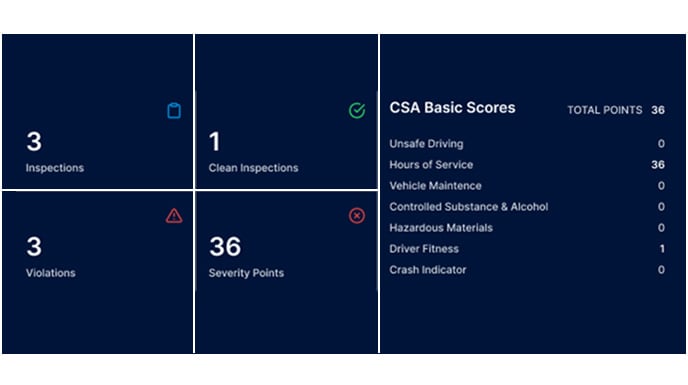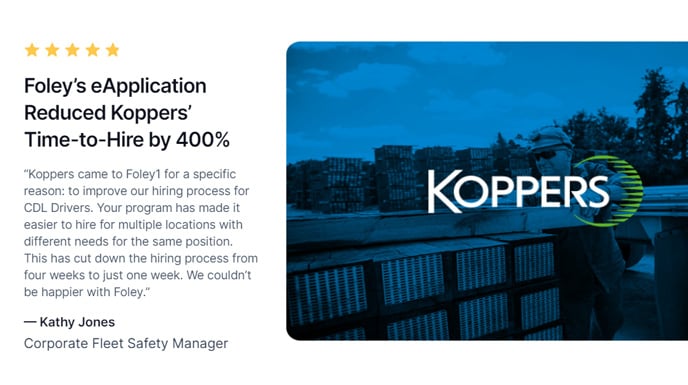Your Guide to Snow Removal State Laws Ahead of Adverse Driving Conditions

Heavy snowfall and UCR enforcement are on their way in 2025. Are you prepared?
It’s (almost) the most wonderful time of the year! In many areas across the US, temperatures are dropping, and snow is starting to fall. Do you know the ice and snow removal laws for your state?
Follow along to find out the laws regarding removing snow from vehicles in these states/areas:
- Alaska
- Connecticut
- Massachusetts
- New Hampshire
- New Jersey
- New York City
- Pennsylvania
We’ll also outline some general state roadway laws that heavy snow and adverse driving conditions could impact, such as load securement and weight.
Alaska Snow Removal Laws
A citation may be given to a driver when there is an accumulation of snow, ice, or frost on the windshield or windows that interferes with their view.
A driver may face the following citations and fines as well:
- $50 fine for snow-covered headlights or taillights
- $75 fine for an uncleared windshield
- $150 fine for driving a car in an unsafe condition
- $500 fine and four points on their license for careless driving
Connecticut Snow Removal Laws
Connecticut police can stop a vehicle if the driver has not cleared off the ice and snow that has accumulated on their vehicle, according to the Ice Missile Law.
Connecticut motorists can be fined $120 if they don’t follow this law. If a piece of ice from their vehicle causes personal injury or property damage to another driver, the penalty is $200 to $1,000 for non-commercial drivers and $500 to $1,250 for commercial drivers.
Massachusetts Snow Removal Laws
Failure to remove snow or ice from the windows of a vehicle could result in a $40 citation from an officer, and up to a $200 fine if heavy sheets of snow or ice are found on a vehicle’s roof. Criminal charges can apply if these lead to an accident or damage to other vehicles in Massachusetts.
New Hampshire Snow Removal Laws
New Hampshire has one of the strictest laws for snow removal. Jessica’s Law was created after Jessica Smith was killed after snow and ice fell off the top of a large truck, hit another truck, and resulted in a head-on collision with her car.
Fines for a first offense range from $250-$500, and between $500-$1,000 for a second offense. Additional penalties such as conviction with points removed, and 30-day loss of license could also apply.

New Jersey Snow Removal Laws
Drivers who fail to remove snow and ice from their windows, hood, and roof in New Jersey can face fines from $25-$75 for each offense, even if it has not fallen off the vehicle during their travels.
If ice or snow from their vehicle causes injury or property damage to others on the road, drivers can face fines of $200-$1,000 for each offense.
New York City Snow Removal Laws
Drivers must remove snow or ice that accumulates to at least three inches on any surface of the vehicle. If a driver does not follow this requirement, they can expect a fine from $150-$850 per violation.
Currently, there is no law against driving a snow- and ice-covered vehicle that applies to New York State as a whole.
Pennsylvania Snow Removal Laws
In Pennsylvania, drivers must make “reasonable efforts” to remove snow and ice from their vehicles within 24 hours after the snowfall and adverse driving conditions have stopped.
Pennsylvania law also states that drivers can be held responsible if snow or ice falls off their moving vehicle and causes death or serious injury after striking another vehicle or pedestrian. If a driver is found guilty of the offense, they can face a fine between $200 and $1,000 per offense.
Other State Vehicle Snow Removal Laws
While most southern and western US states do not have specific snow removal laws in place, other states that experience frequent or even occasional snowfall group it in with existing situations, such as:
- Overweight – A commercial motor vehicle has snow or ice accumulation that causes it to be over 80,000 pounds at a weigh station
- Obstruction of vision – Snow or ice blocks the driver’s view of the road
- Improper Load Securement – Ice or snow falls off a vehicle and causes damage to another vehicle
If a driver commits any of the above offenses, they could face citations, pay expensive fines, or have points added to their license, which can lead to increased insurance costs.
The Responsibility of Safety Managers & Drivers
Staying on top of snow removal rules that apply to your state is the easiest way to put processes in place that keep your company and drivers compliant. While the rules outlined above are based on recent publications, we encourage you to contact your state government offices for the most accurate information.
Well-managed fleets include removing snow from buses, trucks, and the tops of trailers as part of their proactive winter transportation plan, rather than an as-needed reaction after a winter storm blows through. It should be a standard policy that everyone follows regardless of the laws in place for your specific location.
Prepare for Upcoming Adverse Driving Conditions & the New Year
As the end of the year is getting closer, the chances of snowfall keep rising. It also means it’s time to think about your end-of-year compliance requirements. Have you run your FMCSA Clearinghouse queries, filed your 2025 UCR, and conducted an MVR check on each of your drivers?
If the answer is no, the clock is ticking! But you don’t have to panic. Foley can take care of one or all these annual to-dos so you can continue to run a compliant business.
Make sure you use this easy step-by-step process to complete your UCR filing before UCR enforcement begins, or schedule a free demo of our MVR Monitor program or FMCSA Clearinghouse programs to finish your compliance checklist for the year.
Related Articles
February 2021 Significant Rulemaking Report
May 2021 Roadcheck Dates Announced
ELD Malfunction? Here’s How to Stay Compliant
.png)


